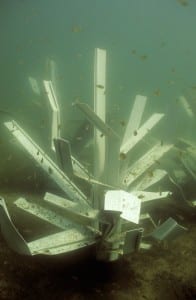 FUNDING has been announced for fish habitat improvement on the Namoi River between Gunnedah and downstream Narrabri. The improvements are aimed at enhancing river health and increasing the fish population, says the State Department of primary Industries (DPI). Applications for funding, under the federal Government’s Clean Energy Future Biodiversity Fund, are invited from landholders adjacent to the Namoi River and associated tributaries, local councils, community groups and fishing clubs, along the 150km stretch from Gunnedah to of Narrabri. See the dozens of unique habitat models at fishiding.com Project co-ordinator and DPI fisheries conservation manager, Milly Hobson, has encouraged landholders to apply for fish habitat funding and become involved in the project. “Funding is available for a range of on-ground works including fencing and revegetation, control of woody weeds, establishment of off-stream stock watering points and the planting of windbreaks and wildlife corridors that connect areas to the river,” Ms Hobson says in a statement. “Activities undertaken by the local community will help protect and enhance native fish habitat, water quality and overall river health. “At the same time the increased the carbon held in trees and native vegetation will help to tackle climate change. “This stretch of the river forms the Namoi demonstration reach, an ongoing project that showcases river health improvement activities landholders can use to increase biodiversity and protect the local environment. “A considerable amount of on-ground work has already been completed throughout the reach over the last five years, and this new partnership will add value to those successful river and wetland rehabilitation activities,” says Ms Hobson. Habitat degradation along waterways has placed extreme pressure on native fish, with some important species such as Murray cod, silver perch and the freshwater catfish now listed as threatened species, she says. “Our aim with this project is to turn the situation around, by providing landholders with funding to undertake works that deliver on-farm benefits as well,” says Ms Hobson. “Landholders and community groups can find out more about this program and receive assistance in developing ideas or project plans by getting in touch with me.” Ms Hobson can be contacted by email at milly.hobson@dpi.nsw.gov.au or by phone on (02) 6763 1206. Expression of interest forms and additional project information are available at the DPI website. | ||